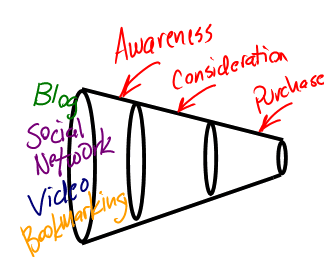Sometimes I’m alarmed by how much business terminology, particularly in sales and marketing, borrows from the brutal lexicon of warfare: words such as strategy, tactics, campaign, and force (as in sales force) each hearken back to Sun Tzu’s The Art of War. The field refers to a battleground, where troops use tactics to attack the enemy (a.k.a. the competition) and gain ground into the territory they are commanded to capture.
So it is in field marketing for a software company. As a field marketing manager, I ultimately report into the sales organization at Autodesk, as opposed to the marketing organization, so my role is akin to a liaison (another wartime term) between marketing, sales, and our customers. I work with both sales and marketing to determine our strategy and targets, then plug content from the marketing organization into campaigns intended to capture target prospects that will purchase our products. But sometimes marketing content doesn’t align with sales goals or with customer feedback I receive, either directly or through the sales team. That’s when it is critical to retreat (to use another fightin’ word), regroup with my contacts, and re-evaluate the content required for the efficacy of my campaigns.
So what kind of content does the field need to fulfill its sales goals? It really depends on where your prospects are in the sales cycle. Over our marketing careers, most of us have likely seen various models of the marketing funnel, generally moving prospects from a wide berth of awareness through an increasingly narrow passage to consideration, education, and finally, purchase. In my experience with both content creation and now campaign execution, I’ve found it useful to consider the marketing funnel before ever setting a word to paper or screen.

Fig. A marketing funnel graphic with social networking added to the mix, from The Conversion Scientist blog.
To really draw in your prospects with a campaign, start planning your content according to each phase of the funnel:
Awareness: Your prospects may or may not be aware of your company, your product, or your service. Furthermore, they may not know how your offering is superior to your competitors’. Of course, the first step before creating content is to ‘know thy customer.’ Conduct online surveys to understand how your prospects perceive your brand, and incorporate their feedback into your content. Then produce assets such as whitepapers and video testimonials to address their issues and bolster awareness.
Education: Often your awareness content can double as educational content, but at this phase in the marketing funnel, consider packaging it differently. For example, turn that white paper into an offer behind a form to both educate your prospects and also capture their information for follow-on marketing activities, such as email blasts driving to trial downloads.
Consideration: Once prospects are aware of your offering, give them tools allowing them to compare you to your competition, or to try your products or services before they decide to purchase.
Purchase: Make it easy for prospects to contact your sales force, either directly or indirectly. Include this contact information on all your content so they have a smooth path toward making a transaction with your organization.
And finally, one phase often missing in the marketing funnel is advocacy, or word-of-mouth marketing, that creates a feedback loop to awareness. Social media has transformed the advocacy phase of the marketing funnel by giving customers and prospects a way to freely distribute feedback on their experience with your company. Examples of content you can provide to exert some degree of control over the message during this phase include packaged blog posts for your blogging community (whether they are sales people, technical specialists, press, or champion customers), tweets, and LinkedIn updates for professional communities related to your product or service. Start discussions to monitor feedback about your content at each phase of the marketing funnel and improve your approach for future prospects.
I may sometimes be alarmed by the warlike vernacular in business competition, but I do know the value of aligning content with campaign strategy to produce results. Create strong content that supports each phase of the marketing funnel, and you may not only win the battle, you might even win the war.


